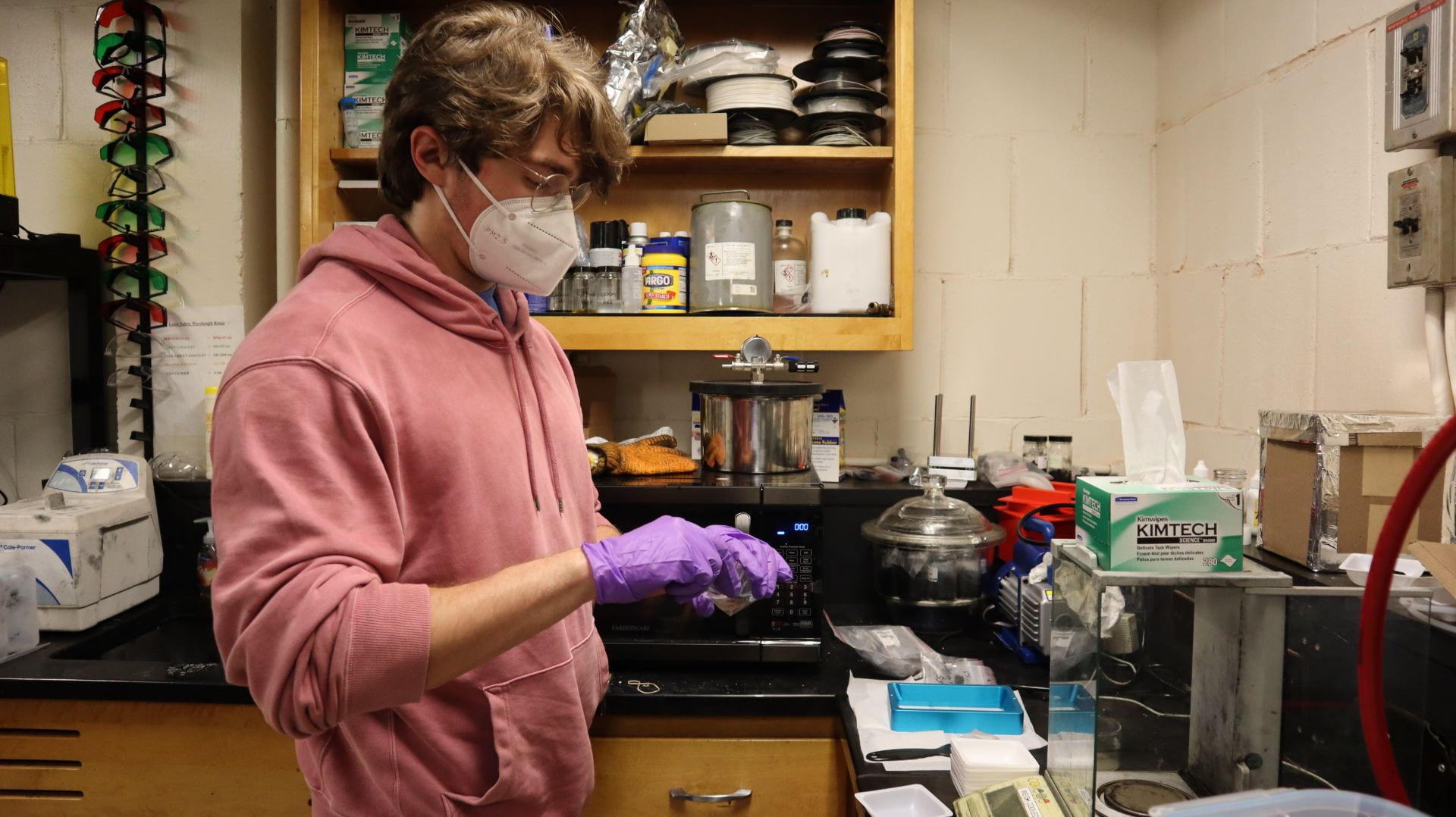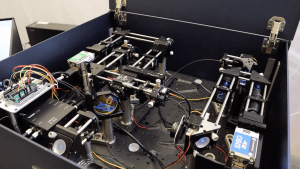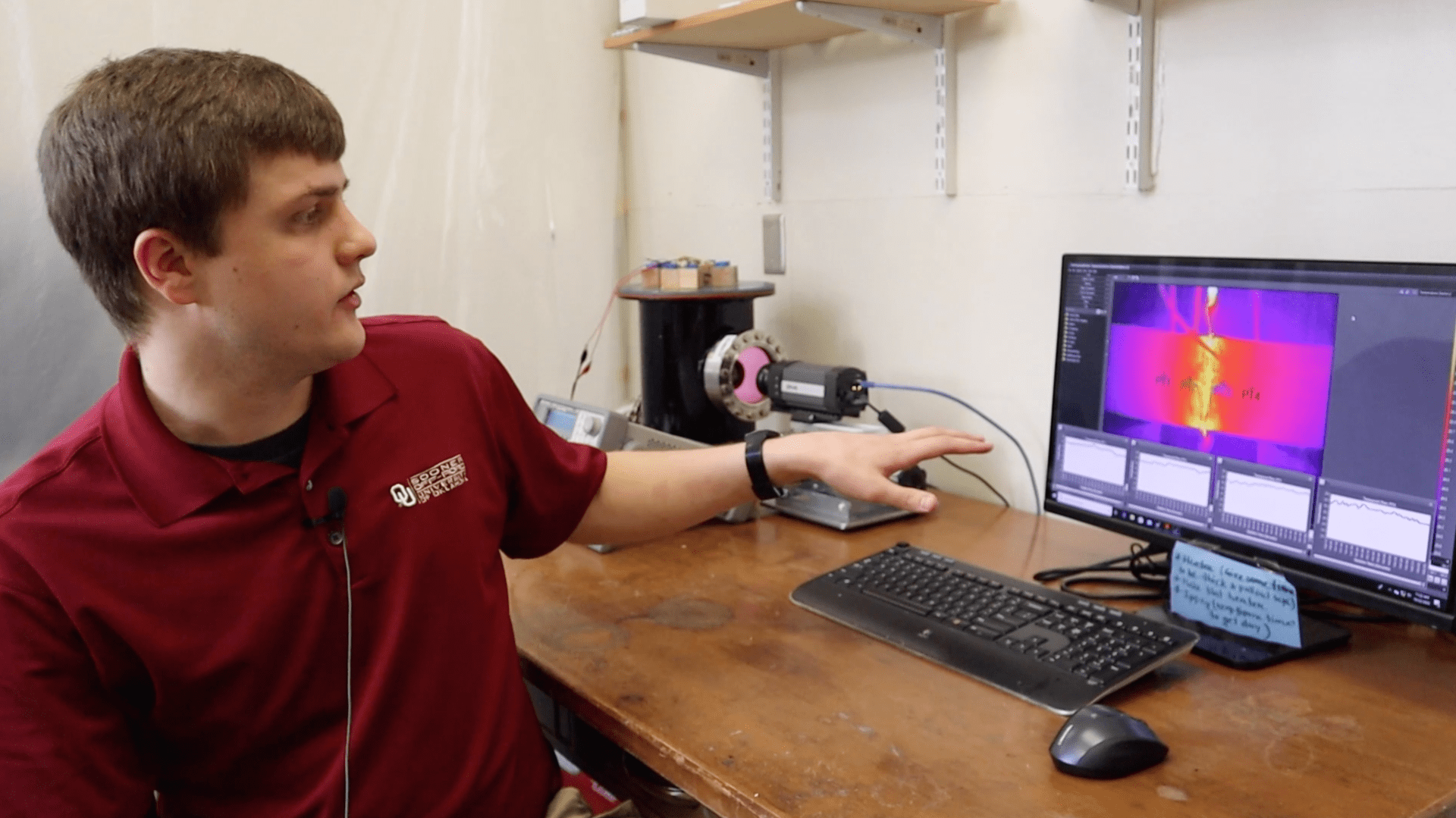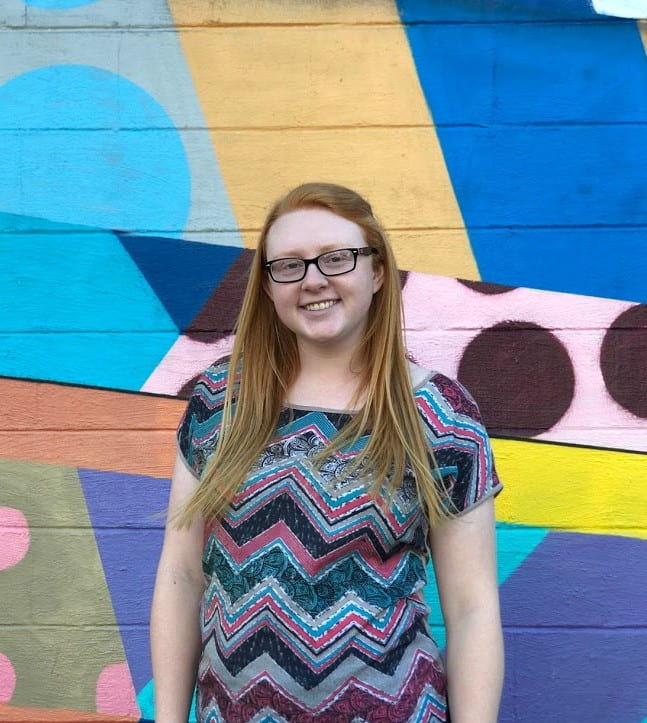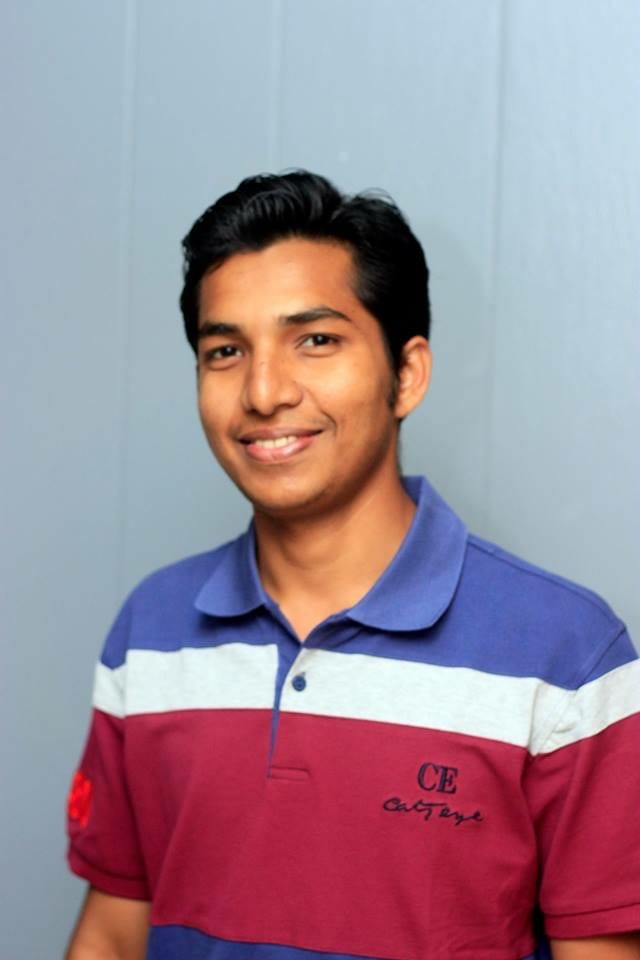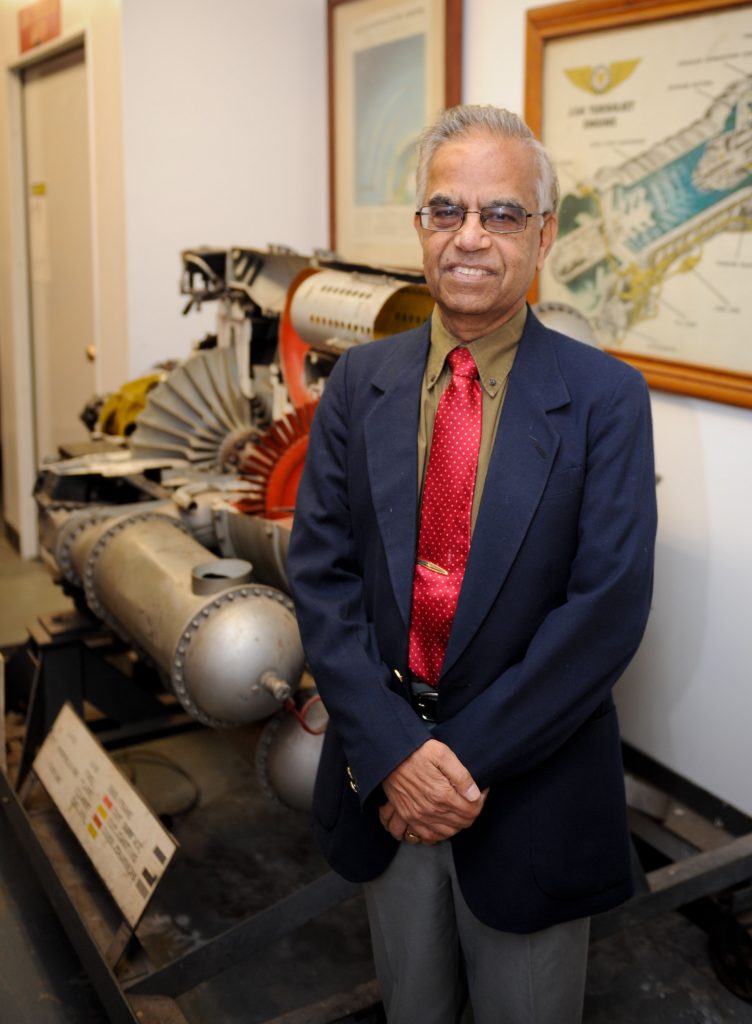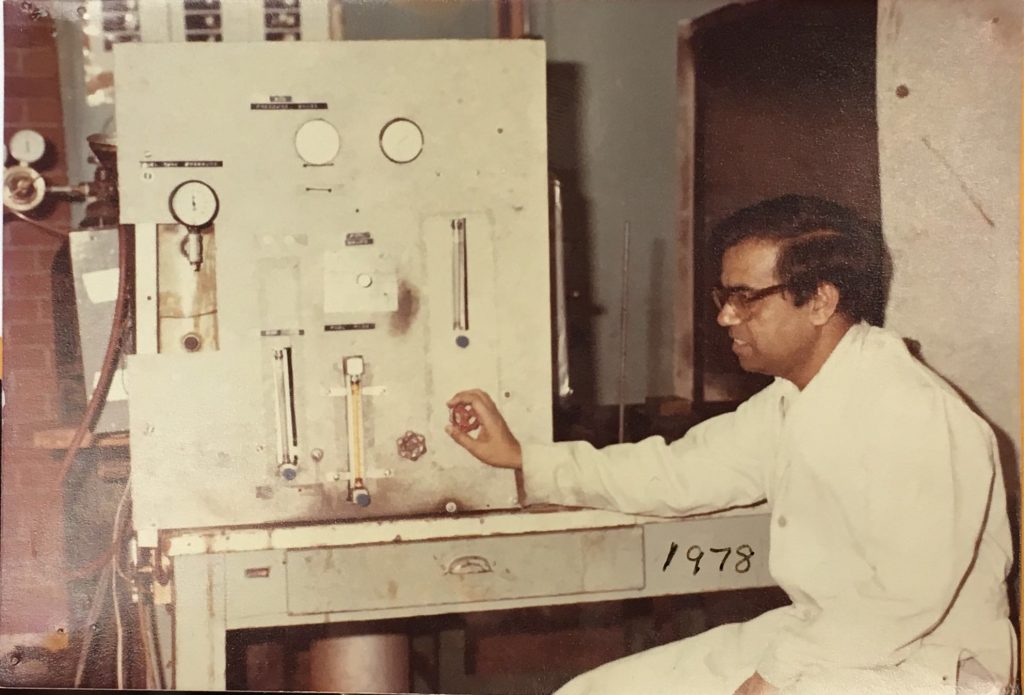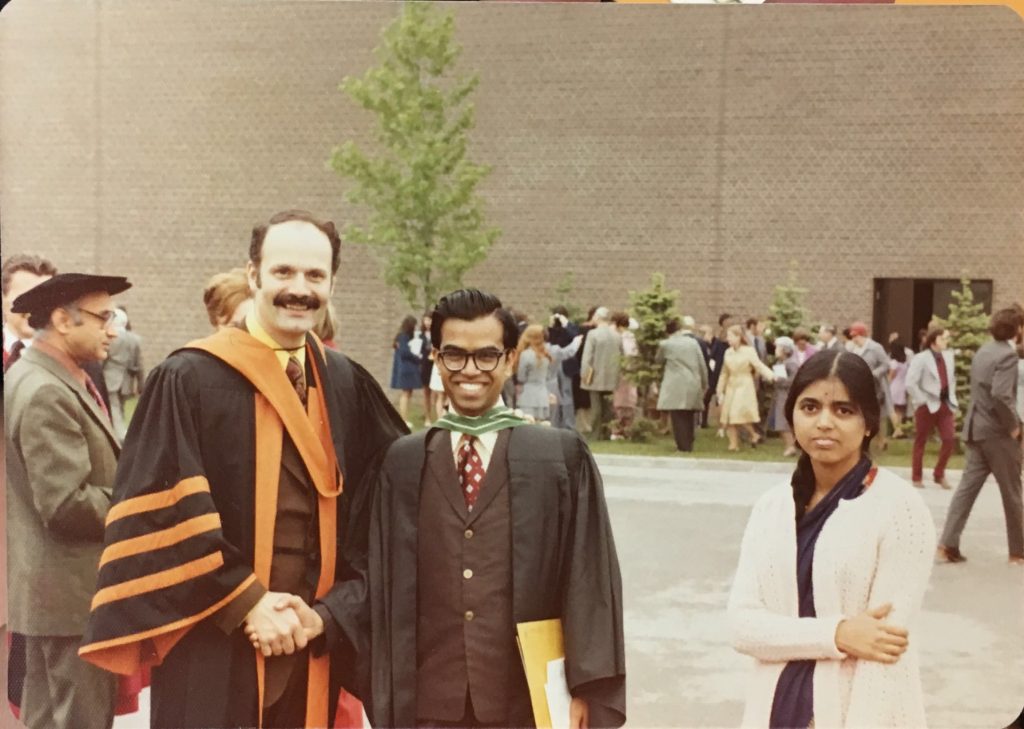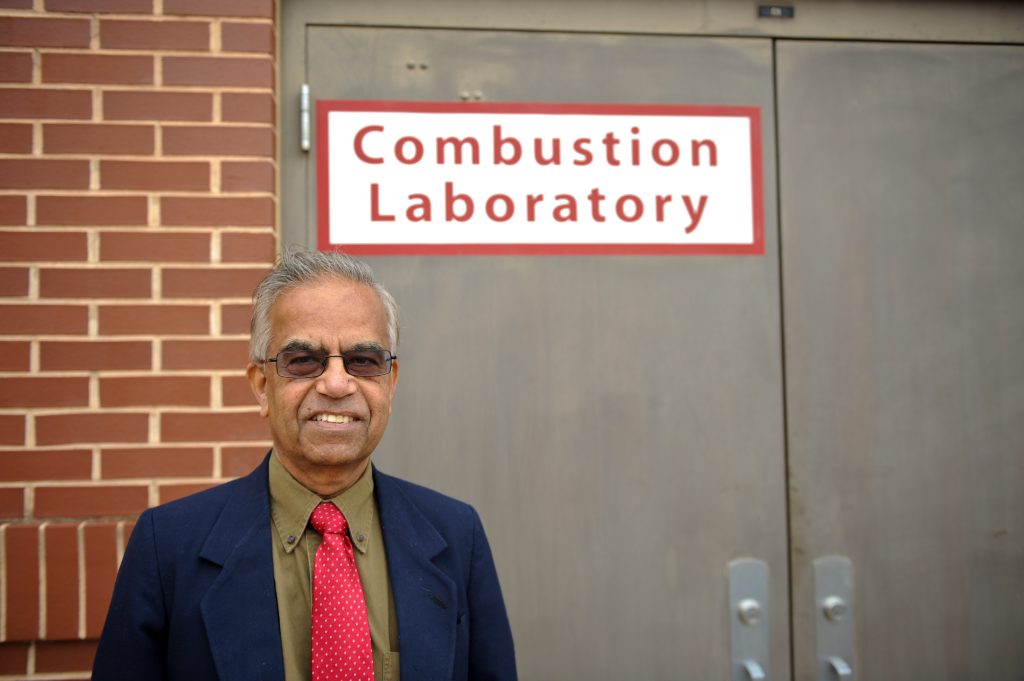Dr. David Miller and Dr. Andrew Fagg are working with researchers and children all over the country to develop a device called the Self-Initiated Prone Progression Crawler (SIPPC) that they hope will be a new treatment for cerebral palsy. The project is called, “Progressive Locomotor Learning in Infants at Risk for Cerebral Palsy.”

Pictured is a child on the SIPPC 3 developed during a NSF NRI grant in 2015. The PIs were: Andy Fagg, David Miller, Lei Ding, and Thubi Kolobe. The grad students from AME that worked on this were Michael Nash and Mustafa Ghazi, both of whom have since graduated (Ph.D. in 2018). Currently, Mustafa Ghazi, as a PostDoc is working on the current version of the SIPPC for the most recent grant. Photo by Hugh Scott.
The research project was given its first grant in 2013, and the researchers (including undergraduate, graduate, and Postdoc students) were ready to create the SIPPC. According to Dr. Miller, “people are at risk for cerebral palsy, but there isn’t a diagnosis that’s done in the age group [they’re] dealing with.” There are, “children at risk for cerebral palsy because they’ve had some sort of trauma either during the birth process or while in the womb.” It’s usually that they’re not moving normally. So, to test the children’s mobility, they evaluate two different groups on the SIPPC. One group has a set of infants that are developing typically, and the other group has infants at risk for cerebral palsy.
Researchers are working on different aspects of this project from coast to coast. In Philadelphia, they bring in and work with all participating patients. In California, they are developing a set of sensors that are protocol for random leg movements in the first few months of child development. Here at OU, they’re developing and testing the SIPPC, “and the plan is to send that off to Philadelphia.”

Pictured is a child on the SIPPC 3 developed during a NSF NRI grant in 2015. The PIs were: Andy Fagg, David Miller, Lei Ding, and Thubi Kolobe. The grad students from AME that worked on this were Michael Nash and Mustafa Ghazi, both of whom have since graduated (Ph.D. in 2018). Currently, Mustafa Ghazi, as a PostDoc is working on the current version of the SIPPC for the most recent grant. Photo by Hugh Scott.
The SIPPC has gone through several revisions. Currently, the group is on its fourth version of the motorized skateboard called SIPPC-4. It’s a motorized skateboard the kids can lie down on, but it measures all the forces of the infants. It has a force-torque sensor, wheel encoders, a few computers, and some cameras onboard. The information automatically goes to a person’s phone or iPad. It also gives an interface to a therapist, so they can control it by getting it out of corners or stopping it if the kid is crying.
“The standard mode is where the kid actually touches the ground and tries to crawl as the device amplifies and quantizes the child’s movements.” So even if they’re a little weak, they get the idea of exploring and having self-determination. There is also an automated learning component. “Even if the child does not touch the ground, but they make the motions as if they are crawling,” the device will work with them. The kids wear a suit that contains several position sensors so the robot can measure the arm and leg positions and movements on the SIPPC.” This way the automated system can coordinate the robot’s movements with the child’s actions.
Dr. Miller said he’s, “hopeful that this research will, probably in the long term, provide some benefit to these subjects or others with a similar condition.”

